Euchilichthys guentheri
Scientific name: Euchilichthys guentheri
Common name: N/A
Family: Mochokidae
Usual size in fish tanks: 16 - 19 cm (6.3 - 7.48 inch)
014
Recommended pH range: 6.5 - 7.2
Recommended water hardness: 12 - 20°N (214.29 - 357.14ppm)
0°C 32°F30°C 86°F
Recommended temperature range: 23 - 26 °C (73.4 - 78.8°F)
The way how these fish reproduce: Spawning
Where the species comes from: Africa
Temperament to its own species: peaceful
Temperament toward other fish species: peaceful
Usual place in the tank: Bottom levels
Origin
This fish originates on the African continent, namely the Democratic Republic of Congo where it inhabits rivers with a strong current and high oxygen levels.
Short description
Euchilichthys guentheri are not the easiest fish to find in the aquarium trade so may demand high prices to potential keepers. They belong to the family of Mochokidae. Adult specimens will reach an average length of up to 7.5 inches so a larger aquarium will be required to give them plenty of swimming space. They are classed as a peaceful species and as juveniles they can be housed together, as they mature they will become territorial so it is best to keep one specimen per aquarium. There is not a great deal of information available for these fish but it is known that they differ from many bottom dwellers as their bodies do not develop any kind of armour plating.
Lifespan
If cared for correctly the average lifespan for Euchilichthys guentheri is expected to be at least 15 years making them a long term investment in the aquarium.
General care
The minimum sized aquarium for housing these fish should be at least 3 feet (90cm) x 1 foot (30cm), but this is the minimum if you can offer them more space with a larger aquarium it will make them much happier. They do require high oxygen content in the water so place the outlet nozzles from the filters towards the water surface to increase gaseous exchange and provide medium water flow. The temperature range should be set between 23-26°C (74-79°F) and the pH should range between 6.5-7.2. They are not too fussy about decoration in the aquarium but rocks or wood should be added to provide hiding places and keep the lighting to moderate levels as bright lighting can make them become shy and inactive during daylight hours.
Sand or gravel can be used for the substrate but if using gravel make sure that the edges are rounded as sharp edges can cause injury to the fish.
As mentioned above they are classed as a peaceful species until they mature, if you are housing these long term it is best to keep a single specimen unless you have plenty of space to allow each specimen to create their own territory to avoid squabbles. Males will be more aggressive than females when mature and will try to dominate all of the bottom levels. They can share the aquarium with most species of fish that require the same water conditions and that occupy the higher levels in the aquarium.
Feeding
Euchilichthys guentheri are constant grazers so in a mature aquarium set up they will graze around the rocks, wood and substrate for algal deposits. If these are not plentiful they can be supplemented with the addition of sinking algae pellets or spirulina flake. The will also accept treat treats of chopped earthworms or blood worms and extra vegetable matter can be provided by the addition of chopped zucchini or blanched peas.
Sexing
Mature females will develop larger than mature males but their markings will be less pronounced than on mature males. Mature males will also develop tubercules on their head area, these will be larger on highly dominant males.
Breeding
There are reported cases of these breeding in the aquarium. The male will dig a shallow pit in the substrate to create a spawning site and then invite the female over to deposit her eggs. The male will fertilise the eggs immediately and then cover them over with the substrate. The eggs should hatch between 7-14 days and once free swimming will graze for algae. For a high fry rate survival crushed algae wafers or spirulina flake should be added to allow the fry to develop.

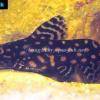 Angel
Angel 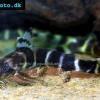 Brichard’s
Brichard’s 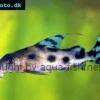 Decorated
Decorated  Featherfin
Featherfin 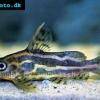 Orangestriped
Orangestriped 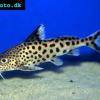 Cuckoo
Cuckoo 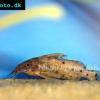 Lace
Lace 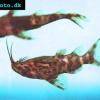 Upside-down
Upside-down  One
One 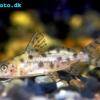 Ocellated
Ocellated 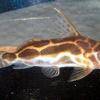 Robert’s
Robert’s